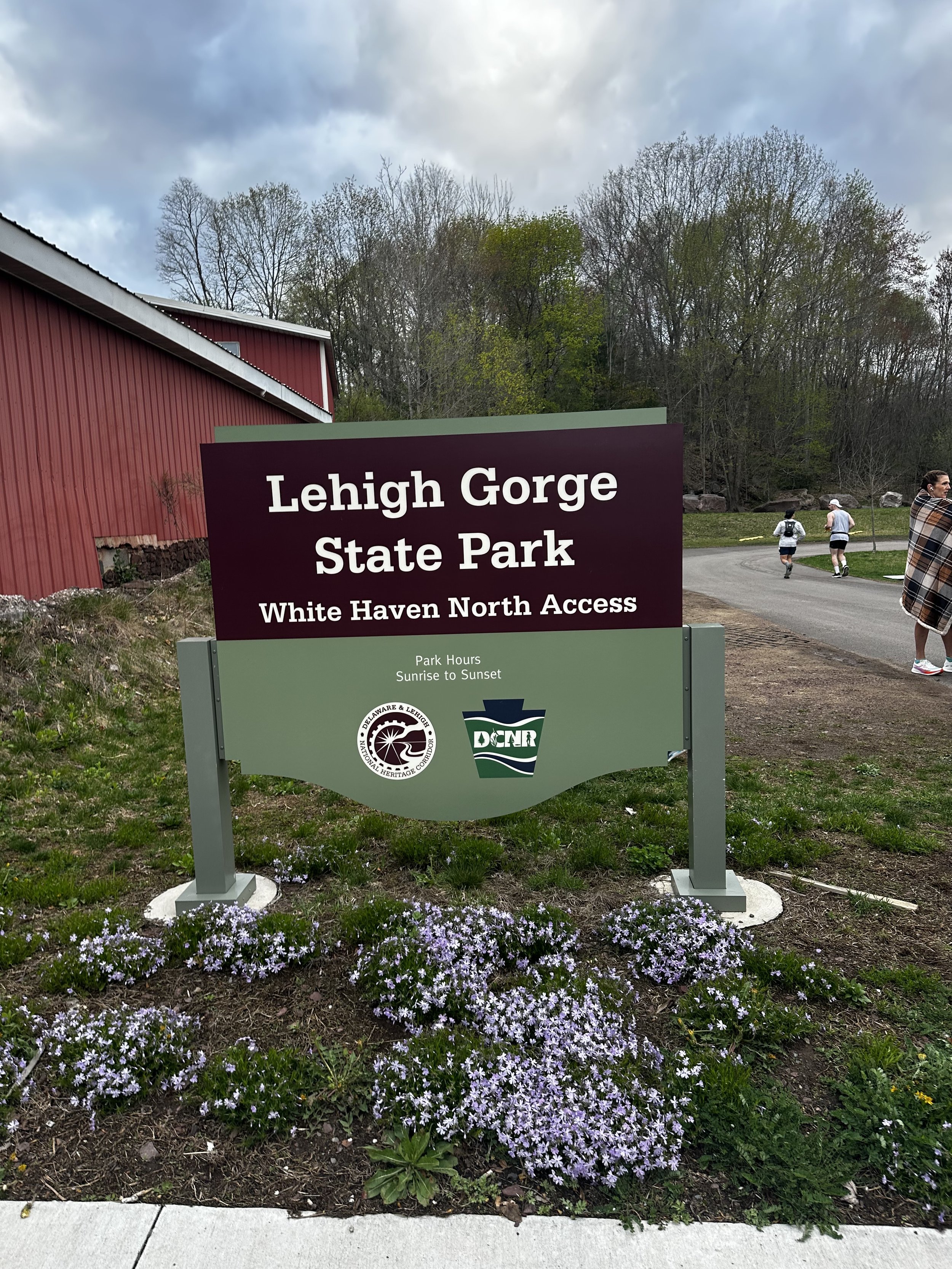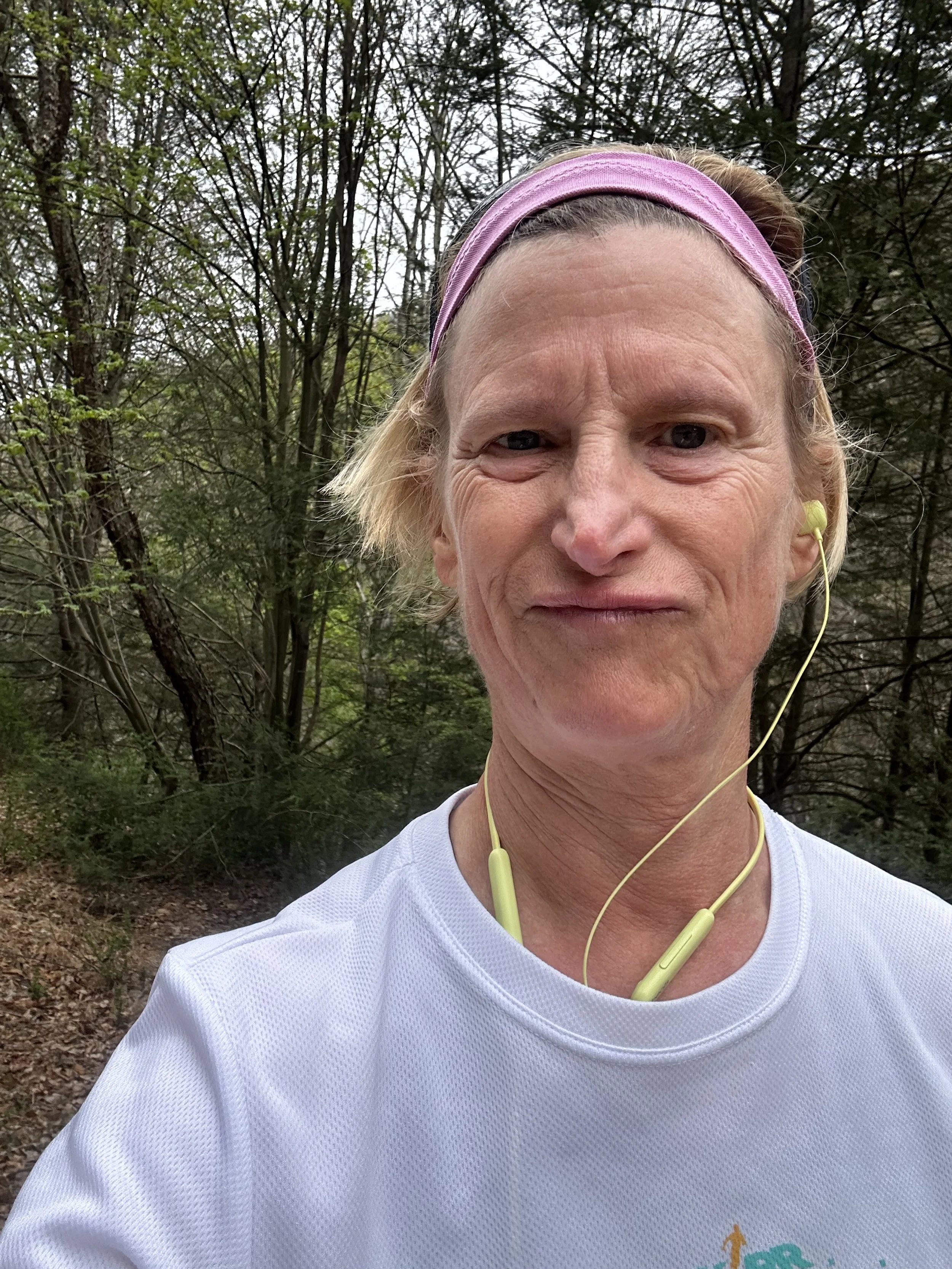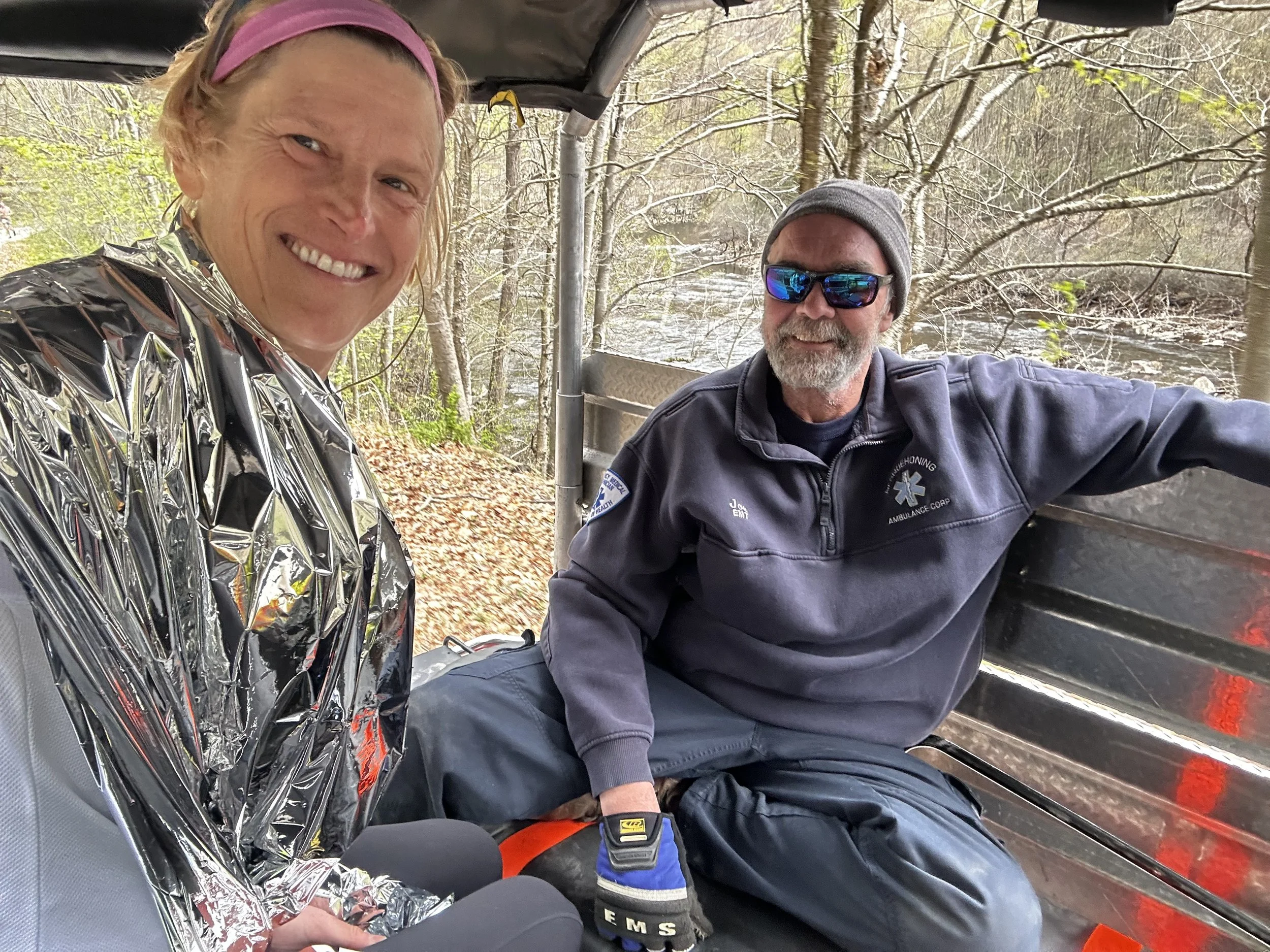From DNF to Data: My Marathon Journey to Wellness Wisdom
I've been chronicling my marathon journey over the past year, and honestly, I haven't really closed the loop on the outcome of my last race. Probably because I DNF'd (okay, stop with the acronyms - I did not finish) my April 27th marathon, the Jim Thorpe Marathon, due to a torn calf muscle.
There I was at mile 13, feeling my calf start to tighten. I had that internal conversation we runners know so well: "Keep breathing, keep hydrating, keep calm, get tall, run light, I'll be alright." The thing is, I was actually trying to break a time, so I didn't back off. A few meters out from the mile 19 marker, I felt that unmistakable "ping!" - the rubber band snap - and my body said enough. Done. Stop. You're finished.
It's risky putting yourself out there with "journaling my marathon journey" on social when things can go - and often do - very differently than planned. But here's the thing: I learn something about myself every race, every single time. So I'll share it, humble pie and all.
The Cardinal Sins That Contributed to My Downfall
The Gear Mistake: I committed runner sin #1 - I wore my beloved Saucony Endorphin Elites on race day. "So what?" you might ask. Well, you wear what you train in, and I'd reserved my fast shoes with their carbon plate magic for speed days (Wed on the track) and race days only. Carbon plate trainers are designed to provide energy return and propulsion, making you feel springy and fast, but they're also stiffer than regular trainers. The thing is, I’d been training in my soft, flexible Asics Novablasts—so when I laced up the Endorphin Elites, they felt springy, fast… and unexpectedly stiff.
Lesson one: Don’t switch shoes on race day. I’m sticking with my Novablasts—ditching carbon plates. Let’s be real, I’m not chasing a podium, I’m here for the joy.
The Health Reality: I was sick, very sick, two weeks prior. It felt like COVID but wasn't. I was not back to 100% on that chilly spring morning in the middle of the Lehigh Gorge, in remote Pennsylvania. So I started off winded in mile one.
Lesson two: Your body never lies. If you're not well, make the smart call. Including “just say no vs go”.
The bottom line? I tore my left gastrocnemius (calf) muscle and needed help fast.
The Road to Recovery and Discovery
My coach connected me with Brian Kuruc at Performance Optimal Health, a talented physical therapist who specializes in working with runners. What followed was a journey through dry needling, physical therapy, and strength training that opened my eyes to how much I didn't know about my own body.
What I discovered was eye-opening: my ankle mobility and range of motion were limited. My posterior chain was weak (yep, just because I run miles doesn't mean I have strong glutes, quads, hamstrings, and calves). And then there's the obvious - I run and hike a lot, so overuse was a contributing factor.
During my treatment, Brian mentioned their comprehensive Optimal Health Assessment with the Technogym system. As someone who loves data, tech, and all things performance, I was instantly intrigued. When they offered to let me try the full assessment to see if it was something I’d find valuable, I jumped at the chance.
Did I mention I love data? Oh wait—yes, I did. 😉
The Data Deep Dive: What I Learned About My 59-Year-Old Body
The Technogym system scanned everything - body composition, mobility, flexibility, strength, mental acuity, and cardiovascular fitness. Here's what this comprehensive assessment revealed:
The Surprising Good News:
My Wellness Age is 54 - five years younger than my chronological age.
Cardiovascular fitness is outstanding (99/100) - my VO2 max of 44.5 ml/min/kg puts me in the "excellent" category
Upper body pulling strength is excellent - all that functional movement and hiking pays off
The Reality Check Areas (aka the "ouch" moments):
Left shoulder mobility needs serious work (overall mobility score: 59/100) - only 159° range vs. the 177-185° I should have
Memory function is poor (overall mind score: 58/100) - my brain speed is excellent, but working memory needs attention. Really? There’s my work.
Balance could be better (54/100) - my right leg balance is just average
The "Aha" Moments That Changed Everything
This data wasn't earth-shattering news, but it was specific, actionable information that helped me understand why I got injured and how to prevent it from happening again.
My injury wasn't just bad luck. Limited ankle mobility, muscle chain weakness, and mobility imbalances were all contributors I could have identified and addressed before they sidelined me at mile 19.
Running fitness ≠ complete fitness. I can maintain a solid pace for miles, but I struggle with shoulder mobility and balance. These deficits affect my running form, create compensation patterns, and set me up for injury.
The body is magnificently interconnected. Poor shoulder mobility doesn't just affect my shoulders - it influences my posture, my breathing, my arm swing, and ultimately my running efficiency.
Data drives better decisions than guesswork. Instead of randomly adding exercises or stretches, I now have a targeted roadmap for improvement.
Training for Life, Not Just PRs
I'm reminded that I'm running for the joy of movement, not to win races. While my Jim Thorpe Marathon ended abruptly at mile 19, it taught me (or continues to teach) to listen to my body and honor it rather than let my ego make decisions.
The assessment gave me a specific action plan:
Shoulder mobility work: Targeted stretching and movement patterns for that limited left shoulder
Balance training: Single-leg stands, yoga, and stability exercises
Cognitive training: Brain games and exercises to support working memory
Functional strength: Continued focus on movement patterns that support real life
Ankle mobility: The foundation work that could have prevented my injury - and as a result, appropriate ankle mobility movement is incorporated into the VITAL Training program!
The Verdict: Worth Sharing
After experiencing this comprehensive assessment, I can honestly say it's valuable enough to share with my VITAL community. It's not just about getting numbers - it's about understanding your body's story and getting a personalized roadmap for improvement.
For anyone curious about their own wellness age and specific areas for improvement, here's what VITAL can offer: an Optimal Health Assessment (OHA) session (normally $200) for $150 for VITAL members. You'll get:
Bioelectrical body composition analysis
Range of motion testing (neck, shoulders, hamstrings, ankles)
Balance and stability check
Cognitive function screening
Personalized Wellness Age report
Expert review with tailored recommendations
Full access to the Technogym app for a month (workouts, mobility, meditation)
How? Contact Jason Clement at Performance Optimal Health and request your VITAL + OHA offer today. Email jason.clement@performanceoptimalhealth.com or call 203-557-9165. Offer valid now through September 1, 2025.
Putting It All Out There - Again
So here I am, putting it out there—again. I’m choosing long-term health over ego and easing up on my competitive drive. My goal now? To run for the fun of it and live vitally for the long game.
Sometimes the most meaningful stories come from the races we don’t finish, and from the data that shows us exactly where we need to grow. A torn calf muscle revealed mobility issues I didn’t know I had, strength imbalances that were quietly setting me up for injury, and even some areas for cognitive growth.
You heard it here: the big dreams, the bumps in the road, and all the messy middle. Because real fitness isn’t just about how fast you can run 26.2 miles—it’s about how well your body, mind, and spirit move through life.
If you're in Westchester County (NY), Fairfield County (CT), or Naples, FL, check out the OHA assessment. It’s a pretty cool way to get a deeper look at your personal readiness.
Let’s keep getting adventure ready—
Libby









